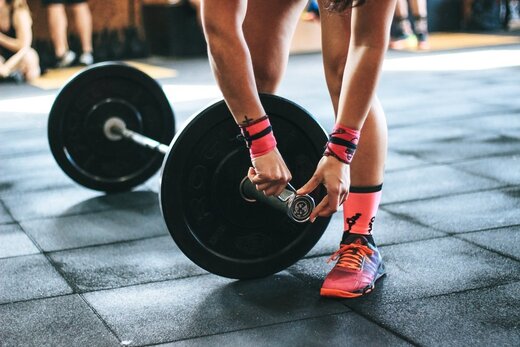
Weightlifting shoes are designed specifically for weightlifting, but that doesn’t mean you should go out and buy the first pair you see. Before you jump on board with the latest trend, make sure you know what you’re looking for in your new shoes it would be a good idea to familiarize yourself with some of the terminology used to describe weightlifting shoes before you head out to buy them.
With this guide, you will know how to choose the right pair of shoes and also how to use them properly so that you can achieve optimal results and avoid injuries. Read on to know more in detail!
What Are Weightlifting Shoes? A Brief Overview
Weightlifting shoes are also called squatting or lifting shoes, as they are primarily used to endure the weight lifting performance. They are used in gyms for performing heavy-wet squats exercises and for all other leg workouts.
It wouldn’t be surprising to know that the anatomy of the weightlifting shoes is hyper-specific, making them expensive and, on the other hand, greatly influencing the weightlifting workout. Let’s be deeply knowledgeable about the construction of weightlifting shoes that endure the capability of the workout.
Benefits:
· Toe
When we talk about weightlifting shoes, the toe area plays a very important role as it starts from the beginning of the shoes and shapes the whole structure of the weightlifting shoes. The toe box of the shoes I designed in such a way that it is continuously in touch with the floor and spreads the pressure throughout the shoe, making the performer sustain the grip and maintain the posture concerning the floor for more time.
· Outsole
The outsole of the weightlifting shoes is made to provide stability, grip, and jerk-proofing while performing the exercise. This makes the performer bear strength and takes up the exercise to an extreme level without the fear of disbalancing.
- Midsole
The midsole of the weightlifting shoes is made up of thermoplastic polyethene and rubber foam as the construction material. the midsole also has a similar job as the outer sole, giving better ground grip to the performer and resisting the shocks and jerks while performing high-intensity exercise. They give the performer stability and makes him control over his actions.
- Elevated heel
The heel can be the most influential thing when it comes to the performance output level. The height of the heel may vary from 0.5 inches to 1.2 inches, depending on what you have opted to buy.
It is an interesting and noticing fact that the material which has been used to create the midsole of the shoes only be used to make the heel of the shoes as the heel is responsible for maintaining the desired posture of the exercise and while pushing the ground down to generate power, the heels provide back d=strength of the foot.
Tips To Buy Weightlifting Shoes- Points To Note

· Heel size
Different persons require different sizes of weightlifting shoes for them, find the right heel size for you. The higher the heel size, the more dorsi flexion will be, which makes the hips move forward and allows you to do a deeper squat. The size of the heel can be adjusted by either adding the lifts or being fixed by a cobbler.
- Choosing the right sole
Keeping in mind which exercise is to be focused on, the right sole can be chosen. For example-flat, shoes with a hard sole are perfect for deadlifts, while cross-training shoes are versatile for exercises other than pieces of training weightlift.
- Find the right fit.
Take a ruler, measure your foot from the heel to the toe, and choose the size of the weightlifting shoes accordingly.
Conclusion
By now, you might have known the importance of weightlifting shoes, and how they can influence the intensity and impact of our training on us, the benefits have been discussed do as to tell you the minute of the changes to your training and what kind of shoes you should have. So what are you waiting for? Go and grab a new pair of weightlifting shoes now and explore a new level of extremeness.
| You may also read : Design a Beautiful Garden in 10 Simple and Easy Steps |